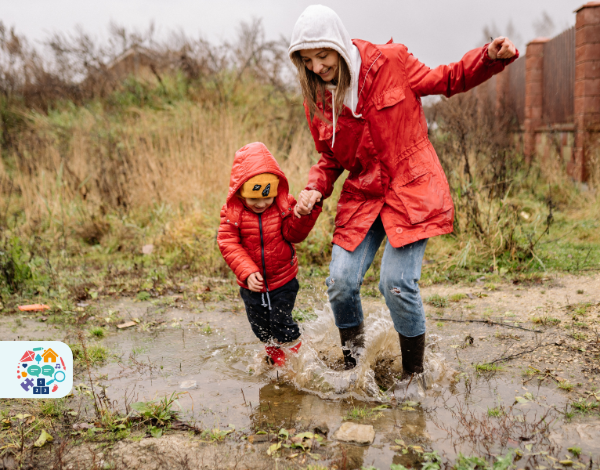Research suggests that 1/3 of the global population aged 15 or older "engages in insufficient physical activity, which affects health"[1].
There is a wealth of evidence which explores the health limiting impacts of this increased sedentary behaviour, leading to long term poor life outcomes for individuals who tend to be less active, such as increased risks of type 2 diabetes, obesity, and certain cancers[2].
This societal trend is particularly worrying when assessing its impact on future generations. We know that a movement rich lifestyle benefits young children in a multiplicity of ways, enhancing physical and cognitive development, helping the child form a relationship with the world and individuals around them[3]. However, the movement restricted lifestyle which has become more prevalent in recent society is being reflected in children, meaning less children are getting access to the crucial movements they require for their development.
An important early statistic which can be used as an indicator of this, is recent research stating that one in three children under the age of 6 are now being diagnosed with Myopia (short sightedness)[4]. A major reason for this increase is due to the fact that children are spending more time indoors, and on screens[5].
If we do not act now, these early indicators of negative health impacts of sedentary behaviour will only exacerbate over the coming years, and cause life limiting health problems as young generations develop and grow. This blog will explore why and how movement is so crucial for young children, and how, as adults, it is important we become movement minded role models for the children in our lives.
Firstly, movement is so critical in the early years in supporting the physical development of a child. According to the Welsh Government's physical activity guidelines, regular access to movement for young children has a multiplicity of advantages which sets the foundations for later life development, such as the development of muscles and bones, brain development and learning, enhancing relationships and skills, improving sleep and improving coordination[1].
This blog will touch on some of these advantages in the following section covering 'Cognitive Development'. In terms of physical development, regular movement benefitting muscles and bones and coordination showcases its vital role in the first 1,000 days. No matter how you go about your day to day, the vast majority of the movements used to perform daily tasks was ascertained in these two first crucial years of life[2]. Tummy Time for babies, jumping, messy play, object play, climbing and games are key examples fundamental movements that are crucial to the physical development of a child.
These movements provide children with the vital opportunity of learning gripping, balance, understanding different feelings which stimulates the vestibular system and proprioception.
However, children do not undertake these movements alone, requiring an enabling adult in their life to provide the space for this activity to take place. Childcare settings provide a space for all children, regardless of their background, to undertake these core movements, benefitting their development. This space is supported by a high-quality workforce who are trained in supporting children in this learning phase, the benefits of which have been long recognised, even by the UK Government[3].
Factors such as the advent of screens, as well as long and tiring working hours for parents, mean many children do not have equal access to movement opportunities throughout their day. Therefore, it is important for the wider community to increase their levels of understanding in how regular movement for children has a positive impact on the life course. This shift in understanding is much needed to tackle the increase in sedentary behaviours that children are experiencing in the first years of their life.
Movement, especially around one's local environment, enables the child to experience their local surroundings, forming a relationship with familiar sights, smells, tastes and sensations, as well as making new friends with other children[1].
These experiences, especially in the first 1,000 days of a child's life, are incredibly crucial. This is supported by key research into the cognitive benefits of regular movement in children, details benefits "associated with changes to certain brain structures, leading to an improvement in memory function (working memory in particular), as well as cognitive control"[2].
Furthermore, "research suggests that physical activity positively influences verbal functions, which facilitates the learning of words in a new language, leading to richer networks of words and their meanings, and also improves spelling performance, language understanding, and the detection of syntactic errors"[3].
The depth of research supporting the benefits of regular movement in children and its benefits for cognitive development showcases the fact that any type of movement undertaken by the child, is crucial for their development. Movement opens up the crucial opportunity for serve and return interactions, which is crucial in the development of the brain.
As described by Alberta Family Wellness initiative, "Serve and return works like a game of tennis or volleyball between child and caregiver. The child "serves" by reaching out for interaction—with eye contact, facial expressions, gestures, babbling, or touch. A responsive caregiver will "return the serve" by speaking back, playing peekaboo, or sharing a toy or a laugh"[4]. The crucial nature of the important role of a caregiver reinforces the importance of adults becoming movement models for the children in their life. This will be discussed later within the blog.
As discussed so far in this blog, regular movement is crucial in early physical and cognitive development, enabling the child to undergo experiences which lay the foundations for the rest of their lives. This is of particular importance when we consider 'healthy habits', and how understanding this from an early age means we are more likely to adopt regular movement into our daily lives as we get older.
As adults, if we are to truly understand the importance of movement and encourage daily use if activity in children's lives, we need to feel its benefits in our own lives. Being a movement role model means you can lead from the front, taking steps to implement movement more into your own life, which others may emulate and follow. Setting an example for children is a great way in which movement can be encouraged in those early years, as well as showcasing how other adults and parents can also become movement minded.
As the popular proverb states: it takes a village to raise a child. In the 21st century however, increasing anxiety about the safety of our local environments has meant that many parents have become much less comfortable in allowing their child to roam around their local streets[1].
Bringing communities together behind the power of movement is an important way in which these anxieties could be addressed. This process requires role models to take that first step. The benefit of a 'movement minded' approach being adopted in communities across Wales has the advantage of supporting all members of the community, from cradle to grave. This is because movement has beneficial impacts throughout our lives, supporting healthy living and reducing the prevalence of life limiting illness[2].
Therefore, a holistic approach to engaging the whole community in the movement journey is incredibly beneficial, creating more opportunities for children to develop in an open and inclusive environment with adults who understand the crucial nature of this stage of life. Behaviour change on this scale will take considerable time and investment from Local Authorities and the Welsh Government, but the power of these changes would be incredibly worthwhile.
In conclusion, while the Welsh Government has made a positive start in supporting children's movement through the adoption of the ECPLC[1] guidance, more effort is needed to raise awareness beyond educational settings. Making ECPLC statutory would be a significant step in ensuring that movement is prioritised in policy initiatives across Wales.
Additionally, increasing awareness of the movement guidelines among parents and the wider community is essential for fostering a cultural shift where movement becomes an integral part of everyday life. Encouraging adults to act as movement-minded role models and to understand the importance of children's movement is equally crucial in creating a supportive environment for children to thrive.
Through these combined efforts, the Welsh Government can truly enhance and protect movement opportunities for children, ultimately benefitting both individual health and the community as a whole.
Blog by Leo Holmes, Head of Policy and Advocacy

